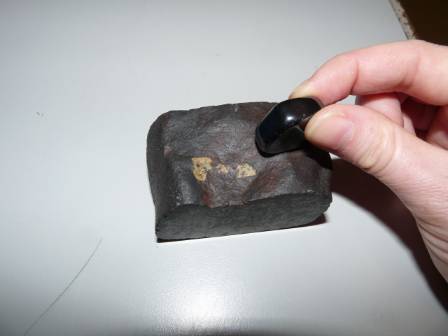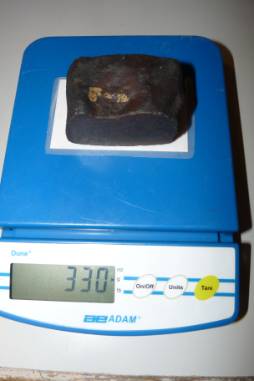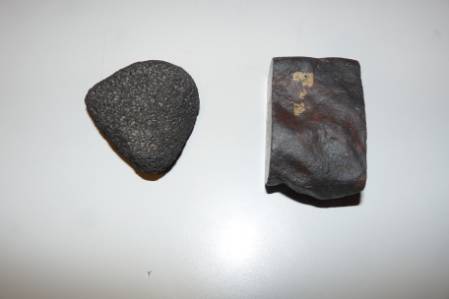In the last few days you may have been lucky enough to see a shooting star as one of the year's biggest meteor showers was displayed in the skies over Britain. But does a meteor ever become a meteorite? And how do you know if you have found one? Well in this blog I will tell you a little more about meteors and meteorites, what to do if you think you have found one, and how to find out more at Meteorites Day 2012, a special event at the Museum on 2 September.
Over the weekend from the 11 to 15 August the UK was treated to the height of a meteor shower recognised as one of the best and most reliable meteor showers in the northern hemisphere. The Perseid meteor shower happens every year between late July and mid August and at its peak can produce tens of meteors an hour.
Originating from the debris stream left by the comet Swift-Tuttle as it orbits the sun, the Perseids are so called because they often appear to come from the constellation Perseus - but as the number of meteors increases they can be seen all across the night sky.
You may think that this event would lead to an increase in meteorite discoveries that are reported to the Identification Service here at the Museum, but meteors are formed from very small particles of matter ejected from the comet, that burn up completely in the atmosphere. This means that if you see a meteor you are unlikely to find a resultant meteorite.
1.jpg) A meteorite discovery from Tanzania
A meteorite discovery from Tanzania
But what if you do think you have found a meteorite - what can you do about it? Well before you jump to conclusions there are a few simple tests you can do on your possible meteorite.
STEP ONE: Test to see if your discovery is magnetic
All meteorites have some degree of magnetism; even the stony meteorites have flecks of iron and nickel mixture throughout the rock that distinguishes them from terrestrial rocks. You should be able to detect the magnetism with an ordinary fridge magnet, so if your object is not magnetic at all - then it is most likely not a meteorite.
 Test your object with a fridge magnet
Test your object with a fridge magnet
STEP TWO: Check the density of your discovery
Meteorites, especially iron meteorites, tend to be far more dense than some of the more commonly mistaken terrestrial rocks, so if your specimen is light in your hand when you pick it up, then again it is unlikely to be a meteorite.
 Your object should be heavy for it's size
Your object should be heavy for it's size
STEP THREE: Look at the surface of your discovery
Meteorites are characterised by something called a fusion crust - when the meteorite comes through the atmosphere the intense heat of entry causes the surface of the meteorite to melt. So if you can see cracks and bubbles or even other bits of rock or mineral stuck to the outside of your discovery, then once again, it is unlikely to be a meteorite.
 The surface of your object should be smooth with no bubbles (right)
The surface of your object should be smooth with no bubbles (right)
So what do you do if you have done these three tests and all three suggest that you have found a meteorite? Then bring it in to the Museum! On Sunday the 2nd of September the Museum are holding a 'Meteorites Amnesty' with members of our Earth Sciences department on hand and some genuine meteorites you can touch and compare against your own discoveries.
There will also be talks and activities throughout the day all about meteorites. However, if you miss this event, don't worry. Just send us a photo at the Identification Service email (ias2@nhm.ac.uk) or bring your specimen in on another day and we will let you know if you have a meteorite or a meteor-wrong!
Find out more about the Meteorites Day special event at the Museum


